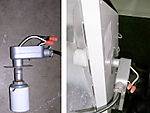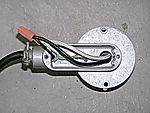I'd find some way to old work some new 12/3 romex on a 20A double pole breaker(at the main panel) to the wall receptacle you are using. I know it's a common hallway and all, but try to pick a time when you think no one will be around. Having Brand new 12/3 romex runing to a spec grade new 14-20R receptacle along with something like the above box with a 15A single pole GFCI breaker might be kinda sweet.
This would be ideal, I know. I'll have to see who I know that's an electrician. Pretty sure I could pull off arranging it when no one would notice. 240v isn't needed, but a 20a circuit would solve the problem of where to run my bedroom ac in the summer since half the apt is on that one circuit. Even though it will only run the cab and a couple cfl hallway lights, when I need that AC there isn't another circuit close enough and I'm sure one 15a will NOT handle the cab and AC.
I'd shut the breaker off to that receptacle and see just what kind of wire feeds it. If it's 2 old dirty black cloth wires coming into a black metal box, then I wouldn't feel overly good about using that wiring for my grow.
You're right, I should do this. Most of the wire I've seen in this building is that old cloth insulated stuff - pretty ratty looking too. When I asked the landlord about this unit she was fairly sure she had electricians in about a decade ago upgrading things to code, but when we moved in there was a GFCI kitchen outlet wired wrong - the kitchen was one area she specifically said was worked on (landlord botched the outlet, not the electricians) - but the wires were old and crusty.





